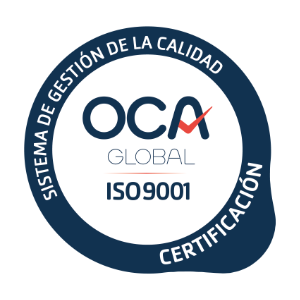Bariatric Surgery
Centres
Gastric Sleeve or Tube
The gastric sleeve or tube involves the removal of approximately 80% of the stomach, turning it into a tube-like structure.
This achieves a decrease in the amount of food the patient consumes due to two mechanisms:
The stomach’s capacity is reduced.
The partial removal of the stomach results in the patient secreting less ghrelin, an appetite-regulating hormone. This leads to a feeling of satiety with a smaller amount of food intake, facilitating adherence to the guidelines set by nutritionists.
The gastric sleeve or tube is indicated for patients with a Body Mass Index (BMI) between 35 and 45.
Advantages of the Gastric Sleeve or Tube:
- The natural anatomy and function of the stomach are preserved, maintaining its natural filling and emptying system.
- There is a lower risk during the procedure since there is no bypass or crossing of intestines.
- The gastric sleeve or tube procedure is purely restrictive. This means that the patient will consume a smaller amount of food but will still absorb nutrients normally.
- Since the natural functioning of the stomach is maintained, the patient can eat almost anything.
Surgery, Postoperative, and Follow-Up:
The surgery lasts approximately 2 hours, and the recovery process is rapid, with a hospital stay typically lasting 3-4 days.
After 8 days, the patient can return to their usual activities, provided they avoid physical exertion. After 1 month, they can engage in physical activities and sports.
The patient will undergo controls and follow-ups with our multidisciplinary team, consisting of nutritionists and psychologists, for 24 months.
Surgery
The procedure lasts approximately 2 hours
Recovery
The recovery process is swift, meaning the hospital stay is usually 3-4 days.

All our treatments include the accompaniment of a team of nutritionists and psychologists to monitor the patient’s progress until the programme is completed.
Gastric Bypass
The Roux-en-Y Gastric Bypass involves reducing the size of the stomach, creating a small gastric pouch that restricts food intake to small volumes.
- It delivers excellent short, medium, and long-term results, achieving a 70% excess weight loss at 5 years.
- Provides a very good quality of life.
- Has few side effects.
- It is an excellent surgery for patients who struggle with cravings and snacking between meals.
- Allows for a quick recovery.
Procedure, Postoperative Care, and Follow-up
The duration of the procedure varies, ranging from one and a half to three hours. After the surgery, the patient spends the initial hours in the recovery unit or ICU for better immediate postoperative monitoring and then transfers to their room.
A radiological control is conducted 48 hours after the procedure before reintroducing a progressive oral diet following the bariatric surgery protocol.
The patient is discharged after 5 days.
At 8 days after the procedure, the patient can resume their normal activities, provided they avoid physical exertion. After one month, they can engage in physical efforts and exercise.
The gastric bypass achieves satisfactory results in 95% of patients, making it the preferred technique for most surgeons.
Surgery
The duration of the procedure varies.
Recovery
Eight days after the procedure, the patient can resume their daily activities as long as they avoid strenuous physical activities.







